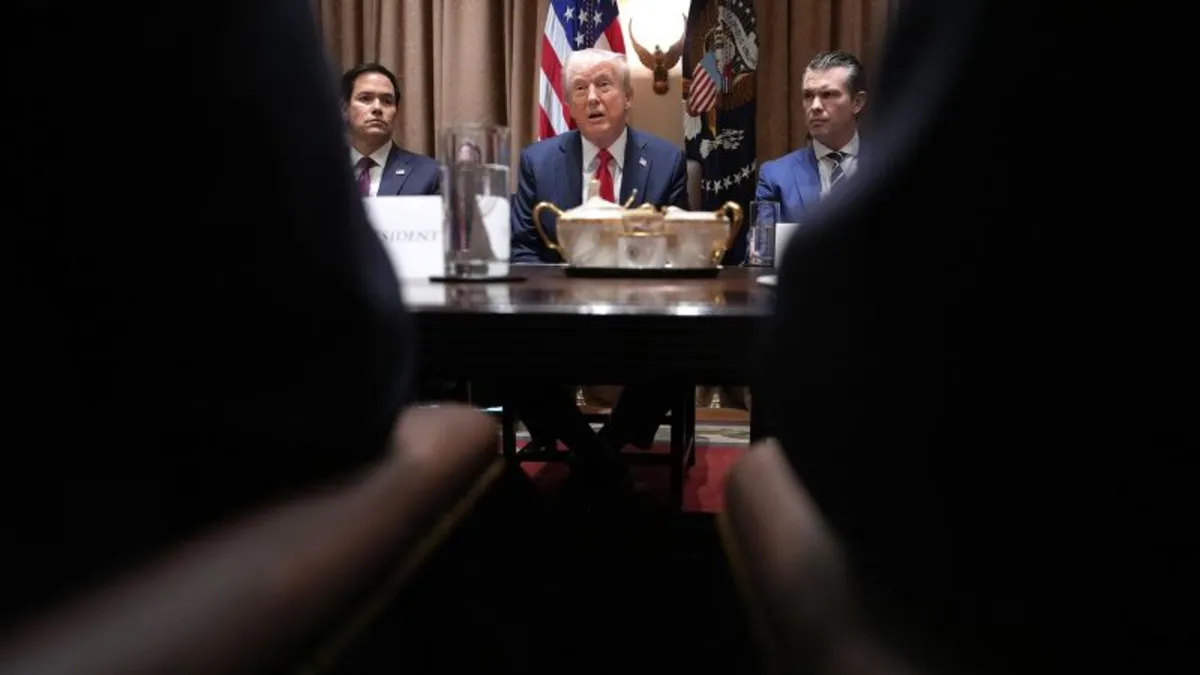
The Trump administration has taken a significant step towards downsizing the federal workforce by moving forward with plans for extensive layoffs across various agencies. On Wednesday, both the Office of Management and Budget (OMB) and the Office of Personnel Management (OPM) released a memo providing guidance on implementing reductions in force (RIFs) and reorganization plans as part of President Donald Trump’s executive order titled “Implementing The President’s ‘Department of Government Efficiency’ Workforce Optimization Initiative.”
This initiative is part of a broader, multi-pronged effort by the Trump administration to overhaul federal operations and decrease the number of employees. In a span of less than six weeks, the administration has laid off tens of thousands of probationary workers, placed others on administrative leave, offered deferred resignation packages, and mandated a return to full-time office work. These actions, along with a recent request for staffers to detail their weekly activities, have heightened anxiety among federal workers who previously felt secure in their jobs.
The last extensive federal workforce reduction occurred during the Clinton administration in the 1990s. According to the memo released Wednesday, agencies are advised to conduct “a significant reduction” by eliminating unnecessary positions and reducing both federal property holdings and budgets. The aim is to enhance service delivery to Americans and boost productivity.
The memo outlines a phased approach for the workforce reductions. In the first phase, agencies must submit lists by March 13, detailing divisions and employees in non-essential roles not mandated by law or regulation. These lists should also include essential roles crucial during government shutdowns, divisions providing direct services to Americans, and statutes establishing the agency. Additionally, agencies are asked to propose methods for engaging Congress in major restructuring efforts and reallocating funds.
The second phase requires an outline of a “positive vision for more productive, efficient agency operations” by April 14, with implementation set for September 30. Agencies must provide proposed organizational charts, review job descriptions, performance reports, service length, and veterans' status of employees. Plans should also address proposed office relocations outside the Washington, DC, metro area, cost reduction, and efficiency improvements through technology.
Certain roles and agencies are exempt from these restructuring efforts, including positions in law enforcement, border security, national security, public safety, immigration enforcement, the military, and federal uniformed personnel such as the US Coast Guard. The US Postal Service and the Executive Office of the President are also not subject to the memo. Agencies or divisions providing direct services, like Social Security, Medicare, and veterans’ health care, are not to implement reductions until OMB and OPM confirm a “positive effect” on service delivery.
Future hiring is restricted under the executive order, allowing only one new hire for every four employees who leave. Agencies are also instructed to review union collective bargaining agreements that may hinder cost-saving measures and efficiency enhancements, with proposals for renegotiation where necessary.
This report includes contributions from CNN’s Kevin Liptak and has been updated with additional details.